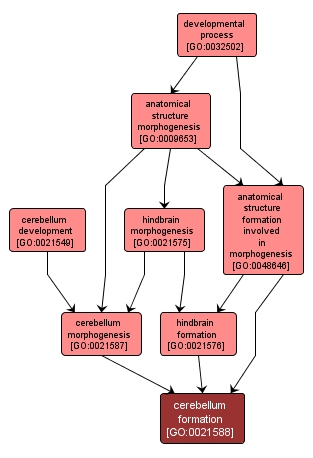| Desc: |
The process that gives rise to the cerebellum. This process pertains to the initial formation of a structure from unspecified parts. The cerebellum is the portion of the brain in the back of the head between the cerebrum and the pons. The cerebellum controls balance for walking and standing, modulates the force and range of movement and is involved in the learning of motor skills. |














